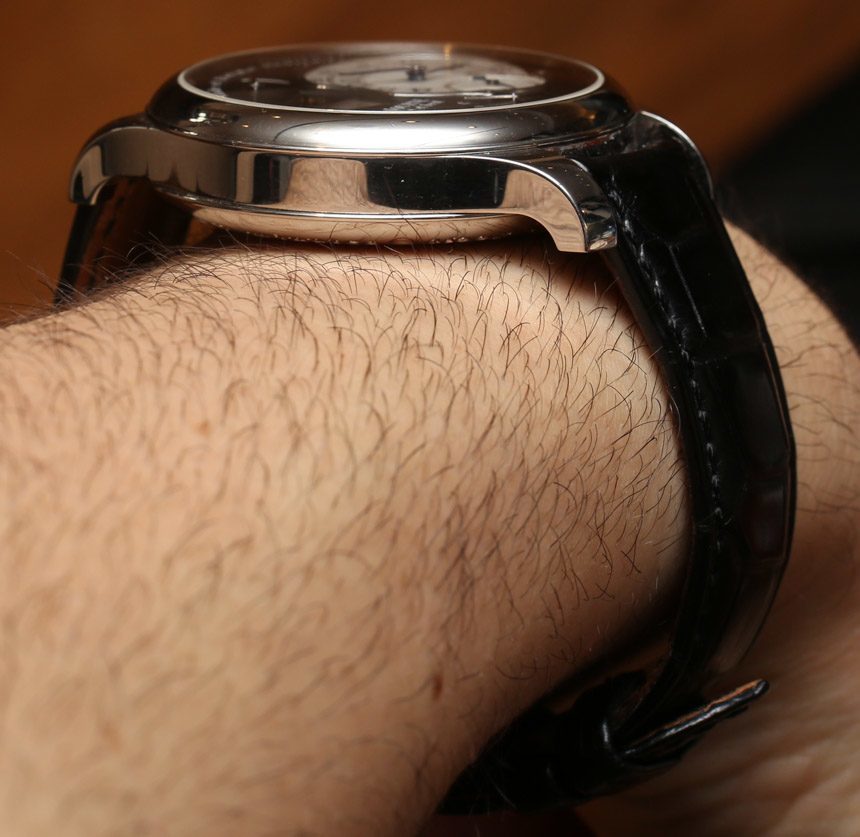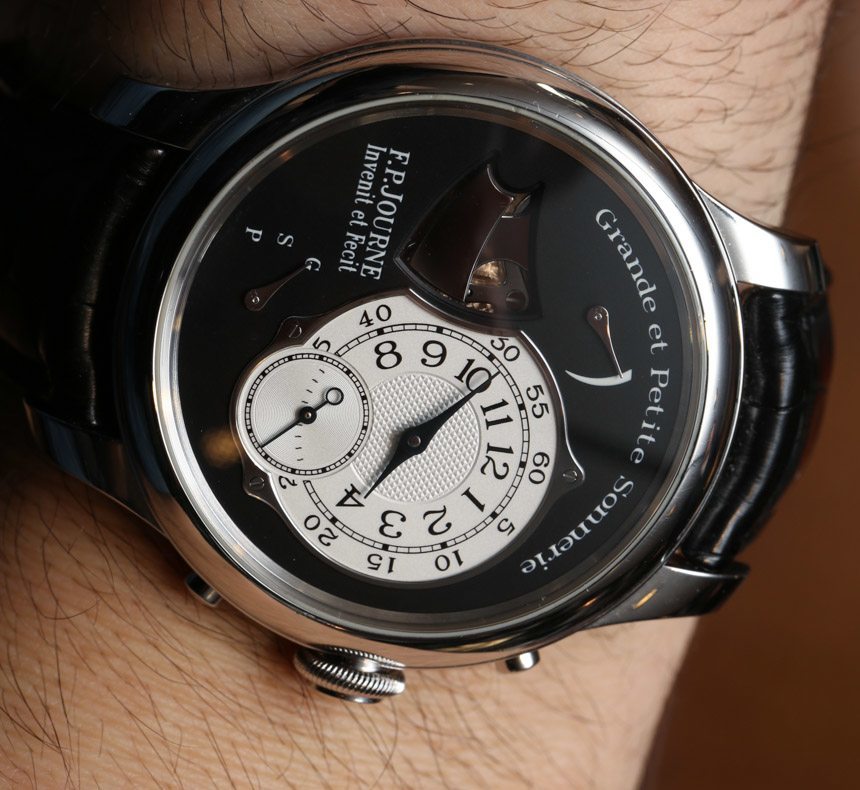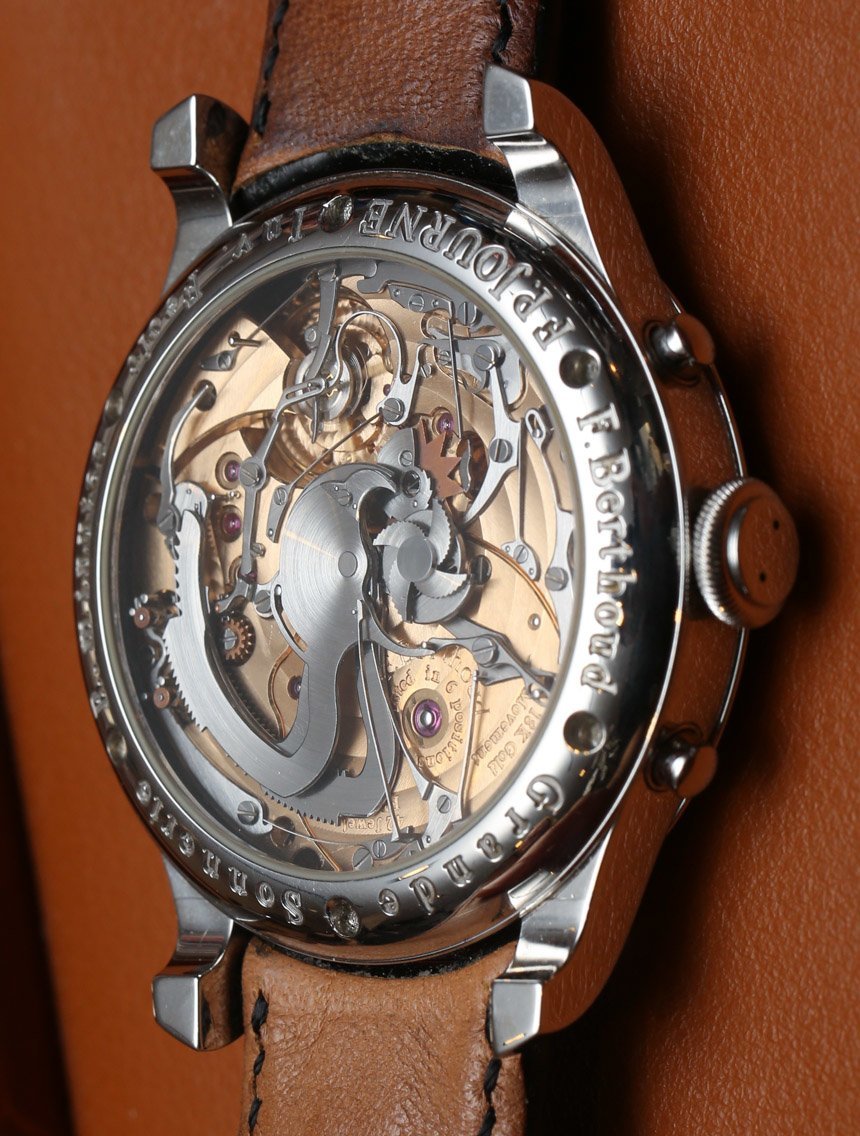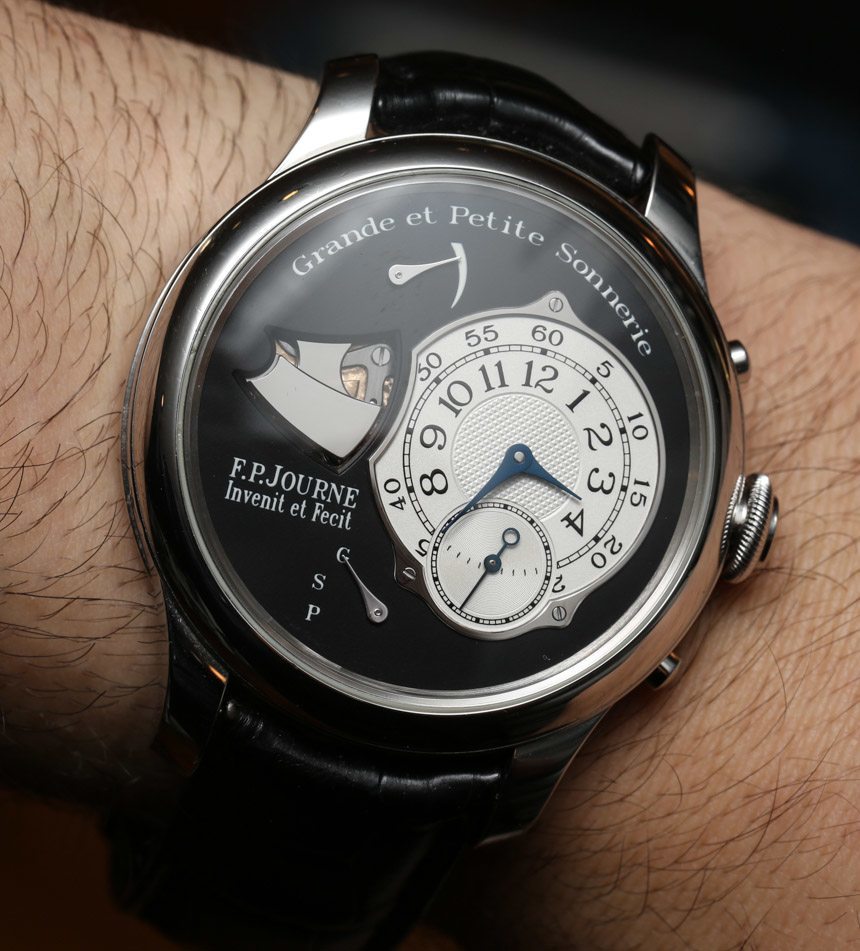
The most masterful of masterpieces among the watches that F.P. Journe produces is perhaps his famed Sonnerie Souveraine. The watch combines a trinity of musical complications in an innovative movement that focuses on beauty as much as it does simplicity and durability. If there was ever a “beater minute repeater” it is the Sonnerie Souveraine. Completed in around 2005, as of 2013, only about 30 of the watches have been produced. This particular piece is F.P. Journe’s personal model, and he wears it everywhere – even if he has a different model watch he is promoting that is worn on his opposite wrist.
Many of today’s greatest watchmakers are far more interested in musical complications, versus things like tourbillons. While the basic architecture of minute repeaters and related complications are mostly the same from watch to watch, the minor details in how these complications are expressed makes all the difference. Minute repeaters are designed to use (typically 2) hammers that strike against gongs to produce musical notes. These chimes are then listened to and interpreted to indicate the time. How does this code usually work?
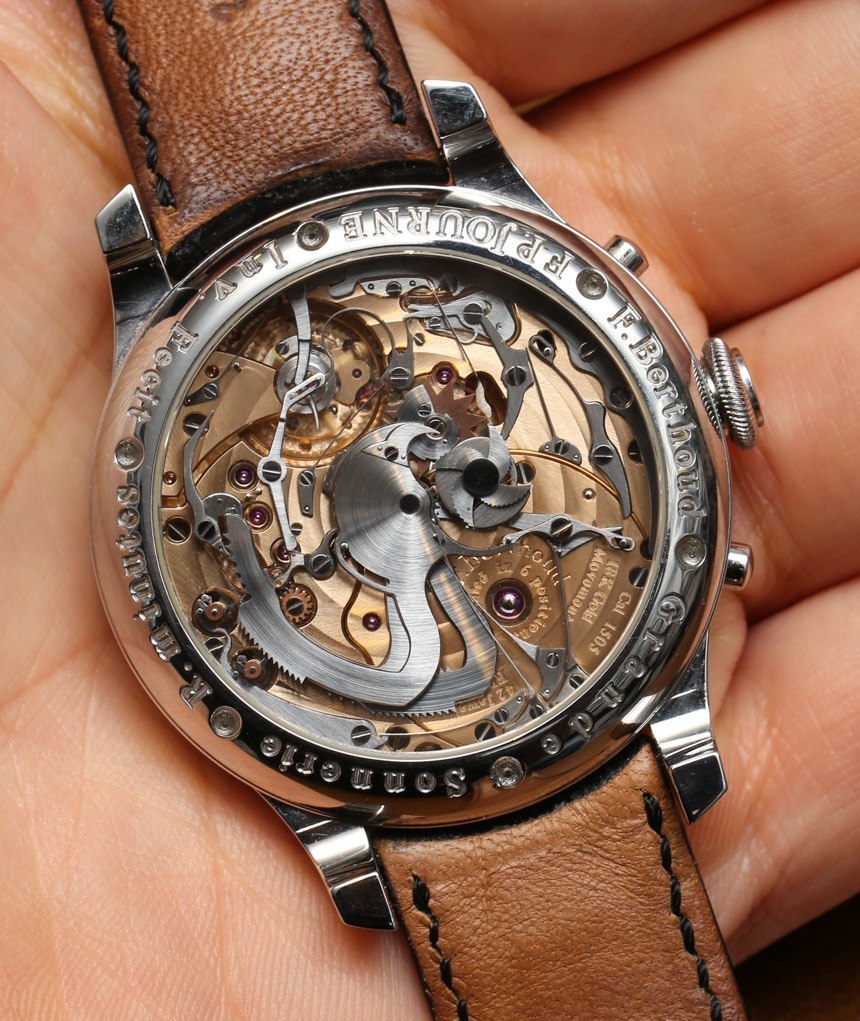
Most minute repeaters begin with a series of chimes that indicate the hours. You count them up to 12 to learn that portion of the time. A different note is then used to count out the quarters (15 minute segments). Last, the remaining chimes sound out the extra minutes. Thus a series of chimes that begins with three strikes, then three more strikes of a different note, followed by one more strike would indicate 3:46. Some are called “quarter repeaters” and are a bit more simple in that they don’t indicate the time up to the precise minute. There are actually a lot of minute repeater variations.
When Journe wanted to make the Sonnerie Souveraine it was his goal to produce the best minute repeater possible – that if operated by an eight year-old child would not break. The weakness inherent in most minute repeaters is mechanical fragility (they break), and the sound (it is often quite weak). It honestly isn’t that big of a deal to produce a minute repeater anymore, but to produce one that can be worn and operated a lot is something quite different. Released in around 2005, the Sonnerie Souveraine isn’t F.P. Journe’s only minute repeater nor his only sonnerie, but it is his crowning achievement in combining them both.
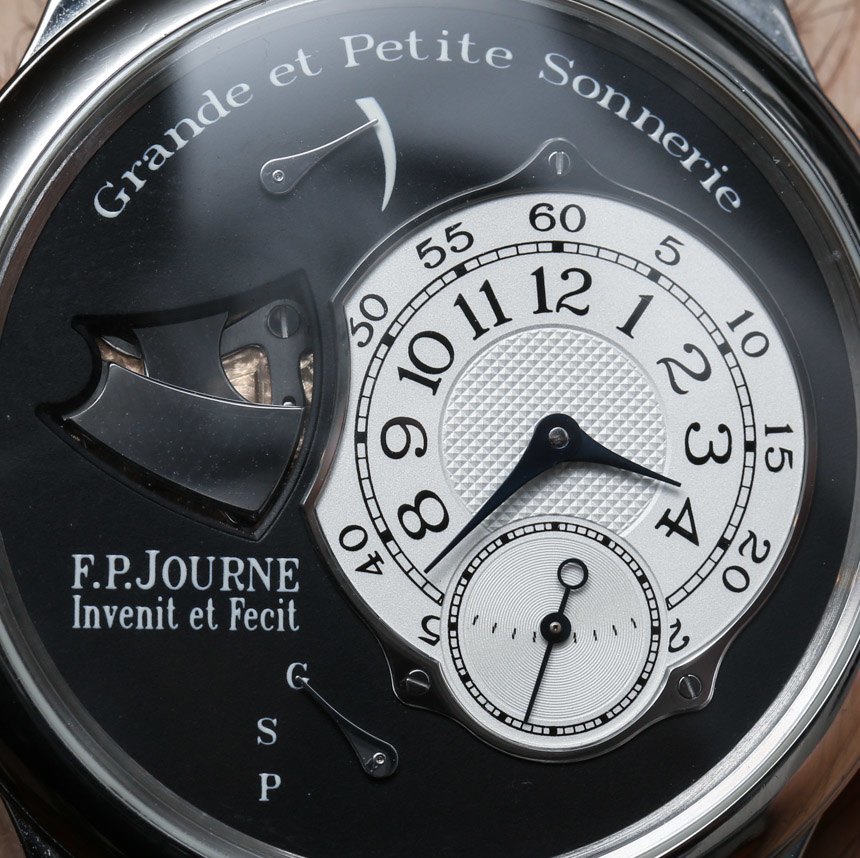
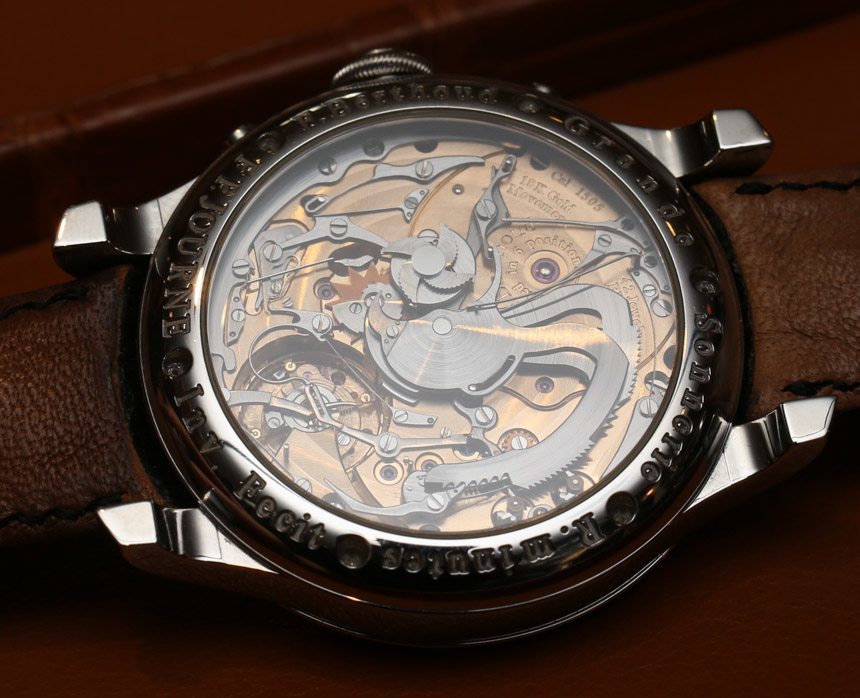
So what are these different complications? Terms like sonnerie and minute repeater are thrown around a lot but I find that most people don’t really understand them. Sonneries are far more rare compared to minute repeaters. What is interesting is the name of the watch doesn’t even imply that it contains a minute repeater with it just being “Sonnerie Souveraine.” It would also be possible to look at the watch and have no idea it contained this complication because it lacks the customary “all or nothing sliding lever” that is often used to activate a minute repeater complication. Instead, the watch uses a simple pusher to activate the minute repeater.
Journe does this because the traditional sliding lever is a serious source of headaches for watch repair people. Using it incorrectly can break a watch, and if you didn’t get the message already, minute repeaters are notoriously delicate. This detail is exaggerated by the fact that people tend to play with them endlessly. So while a minute repeater is designed to tell you the time via the chimes on demand, a sonnerie does the same but at particular intervals automatically. To understand this it is best to think of a traditional grandfather clock, or perhaps church bells that chime at the top of each hour.
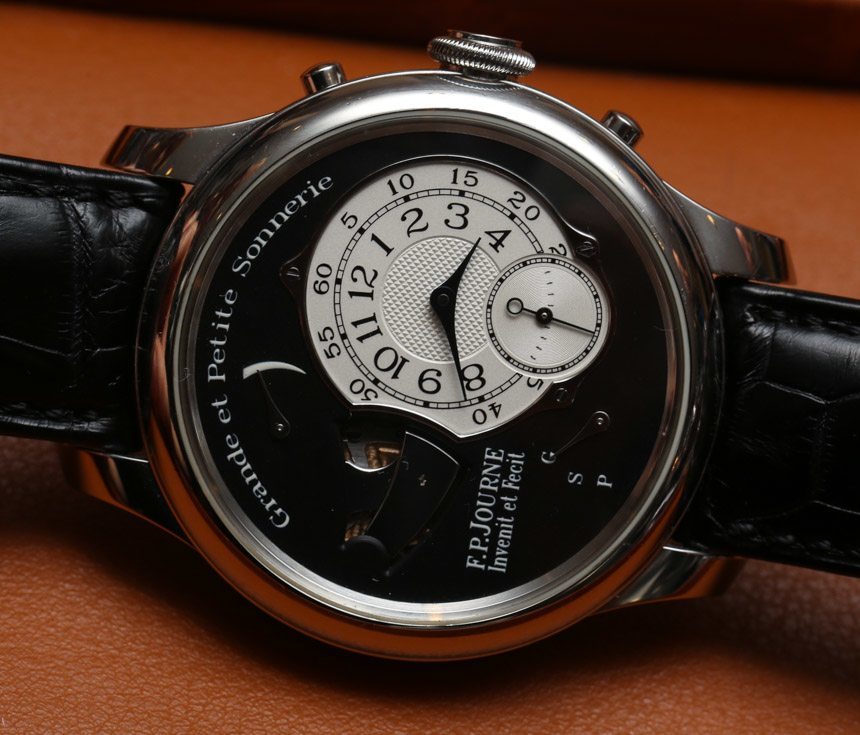
F.P. Journe’s Sonnerie Souveraine actually has two types of sonnerie modes. It has a “Grand Sonnerie” as well as a “Petite Sonnerie.” What is the difference? Well it has to do with how often they chime and how much information they offer. To be honest I’ve seen different watches with these titles that do slightly different things. In this watch the grand sonnerie fully chimes the time each 15 minutes. The petite sonnerie however only indicates the hour at each passing point, and the quarters each 15 minutes.
When it comes to chiming complications, power is always an issue as these features use a lot of it. The movement is designed to have enough power to run the grand (full) sonnerie continuously for a period of around 24 hours. That mean 96 instances of full chimes. This is with a single mainspring barrel mind you. You’ll get more power out of having the watch in petite sonnerie mode, and without any chiming features at all, the movement has enough power reserve to run for five days. Journe was fully dedicated to the durability of the system so each movement is designed to ensure at least 35,040 chimes per year.
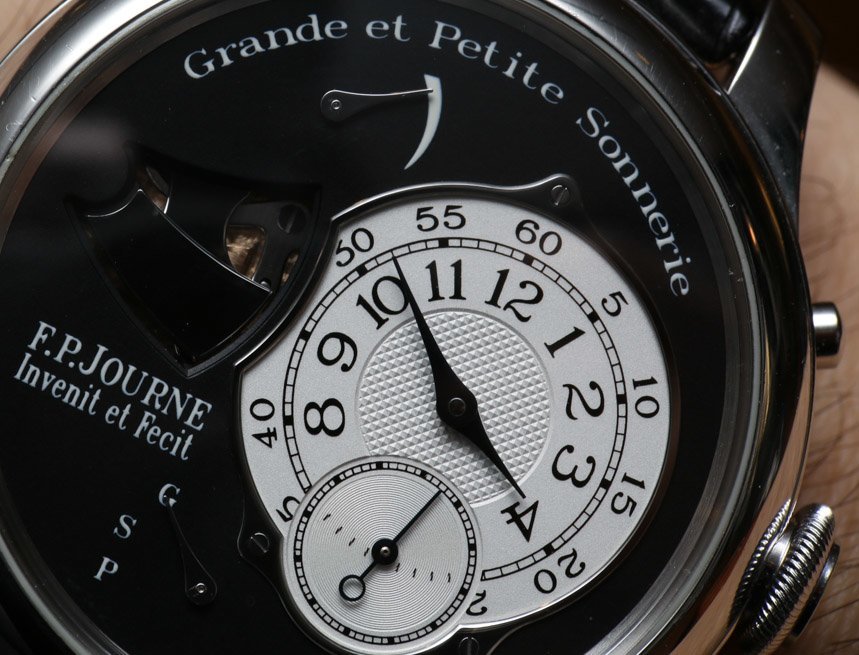
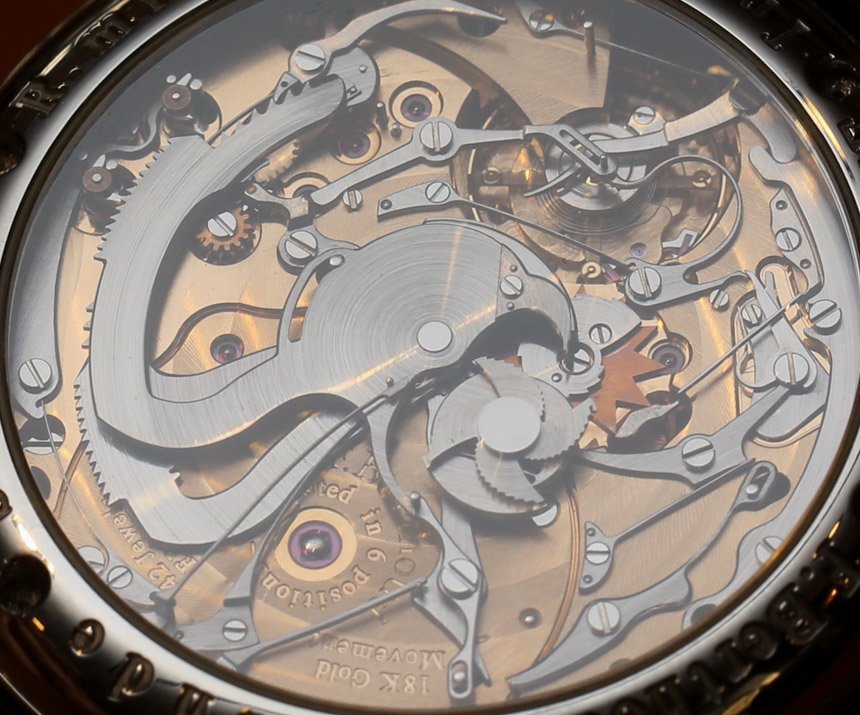
Inside the watch is the F.P. Journe designed and in-house made caliber 1505 manually wound movement. The base plate is in 18k gold and it is covered by no less than ten patents, which is quite a lot for a mechanical wristwatch. Journe is something of a protectionist when it comes to his own technology. Artistically minded, he likes to be given credit for his innovations and has the most esteem for fellow watchmakers who likewise strive to be different and improve the art form. Understandably emotional and passionate about his work, he is generally irritated by those he sees as riding on the work of others or who don’t put in the requisite time to produce something unique. He has a good point, and I’d probably feel the same way. Though it can be argued that all modern watchmakers are riding on the work of their thematic forefathers of yesteryear.
One thing I’ve always come to appreciate about F.P. Journe movements is their distinctive look (not to mention their attractiveness). Few, if anyone else, use gold mainplates, and his style of finishing is unique. All of his work is based in Geneva, and his manufacture is among the very few actually located in a “big” city. Most other Swiss watchmakers are out in farm country. There is little skeletonization on the dial save for the exposed hammers that actually strike in different directions and are seen on the dial. There you will also find an off-centered dial for the time and seconds, a power reserve indicator for the movement, as well as a selection indicator for the grande sonnerie (G), petite sonnerie (P), or silent mode (S). The minute repeater can be activated at any time. In order to protect the movement, the time cannot be adjusted while a chiming feature is in action.
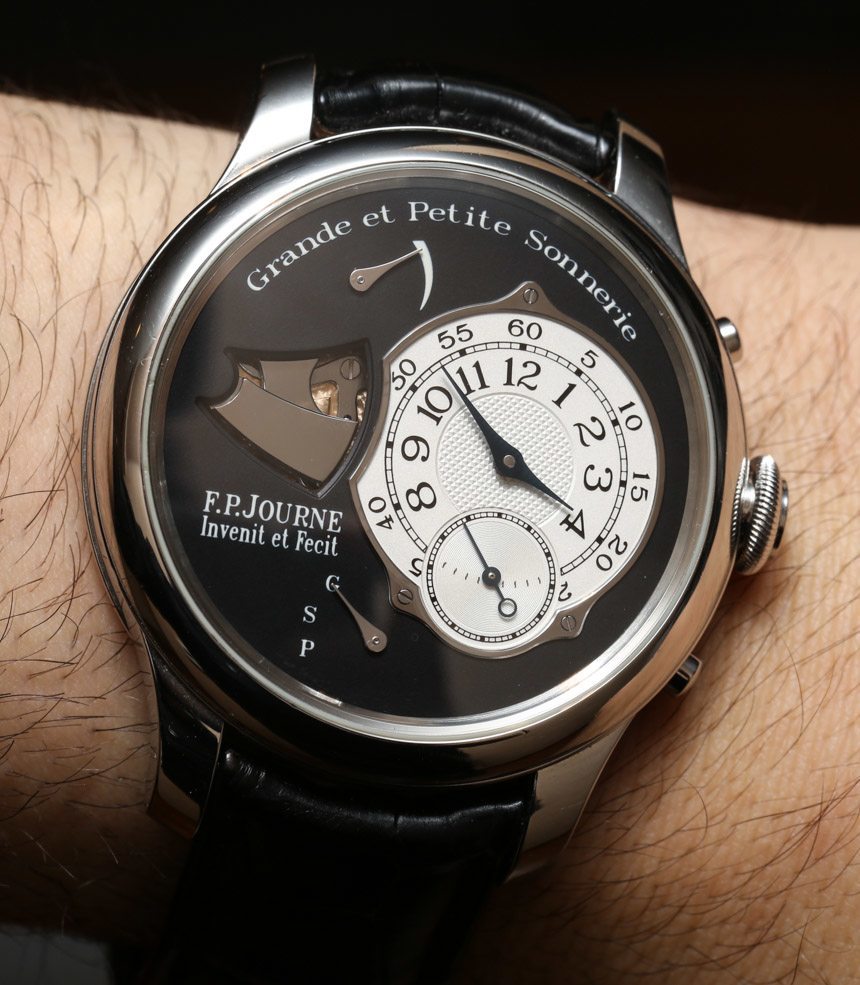
At 42mm wide and not particularly thin, the watch wears comfortably and is something you could easily wear all the time. Journe makes modestly sized watches. Not small ones, but not huge ones either. I’d say that I’ve never worn an F.P. Journe watch that I felt wasn’t something I could easily wear constantly. I’ve come to respect that detail about his watches, and find that his focus on comfort and lasting utility and design are a great virtue of the brand.
The final quirk of the Sonneire Souveraine watch is the case material. Given everything included in the package it comes in a steel case. Steel you ask? Shouldn’t a watch of this caliber be in a case made from at least gold or platinum? It could have been, and there are perhaps versions of the watch out there in those materials. Francois-Paul prefers steel. He uses a rather wonderfully polished steel case that looks almost like 18k white gold, but it is steel. The reason is because of the chiming features. Steel allows the sound to resonate better, as heavier metals tend to absorb the sound. So for the sake of the minute repeater and sonnerie function, the watch comes in a steel case. If you like this watch you aren’t alone. It won a prize at the Grand Prix d’Horlogerie de Geneve by the watch industry itself, and overall F.P. Journe is a brand favored by some of the most seasoned collectors. A watch such as this comes with a price tag of $650,000. fpjourne.com

